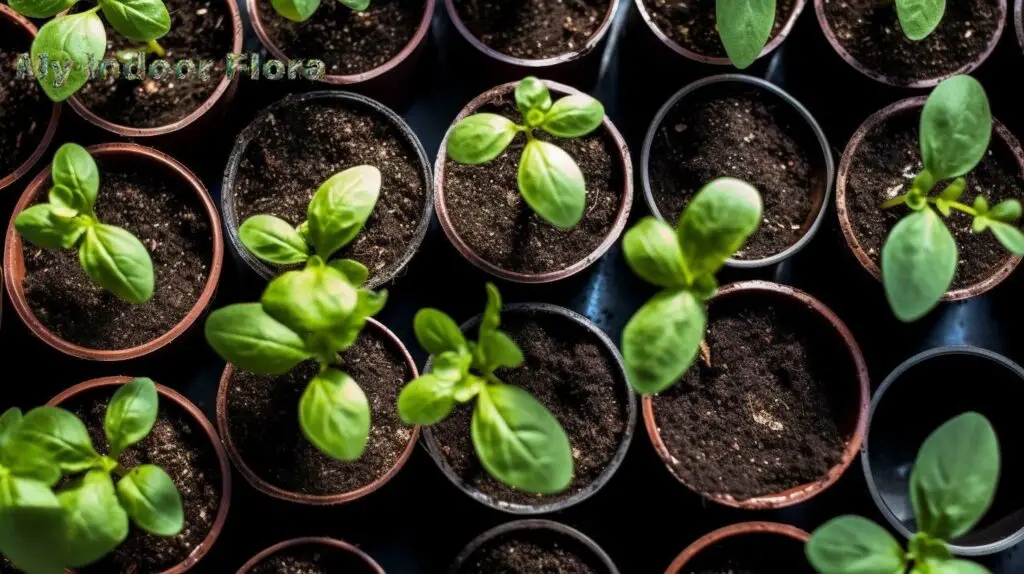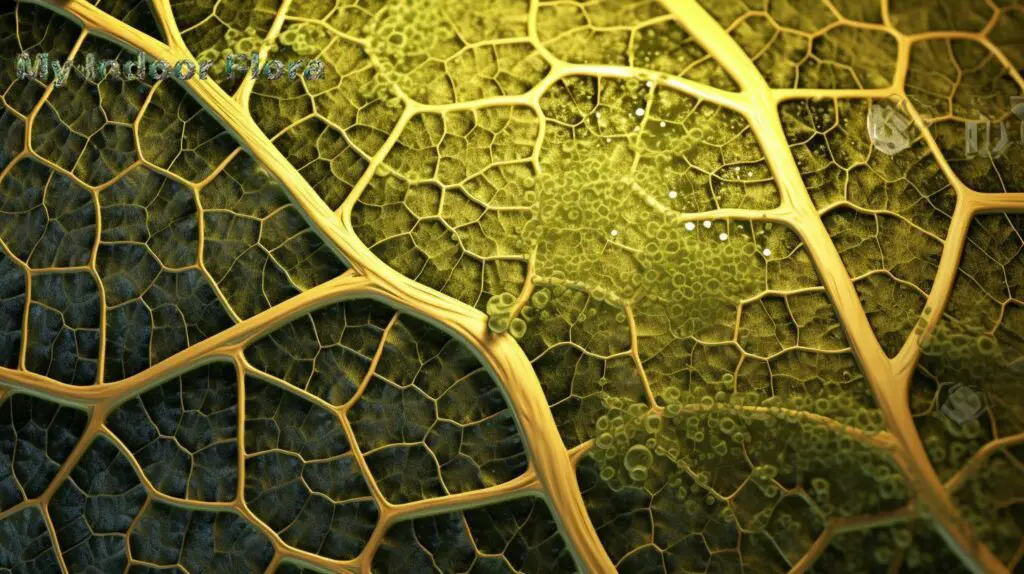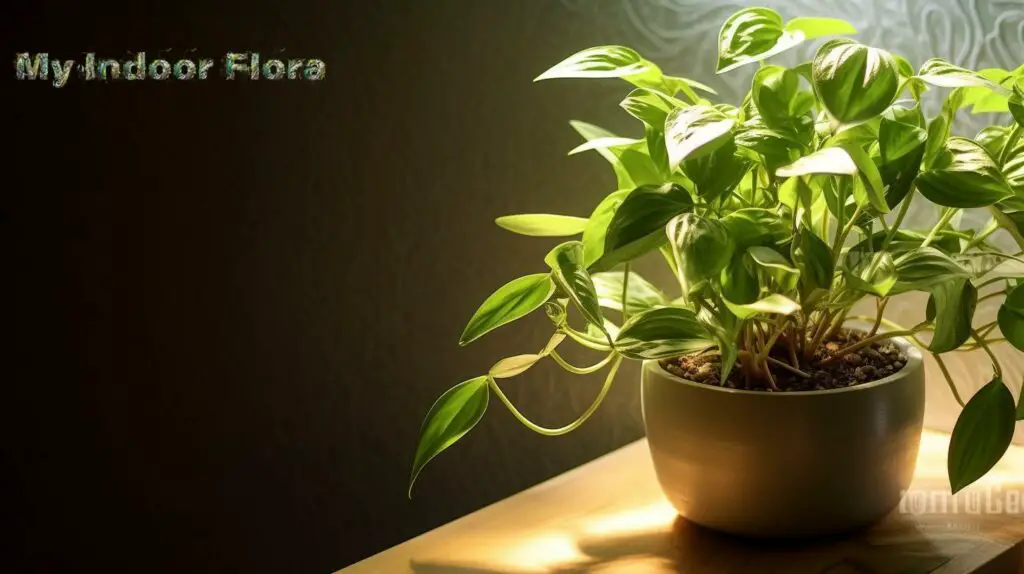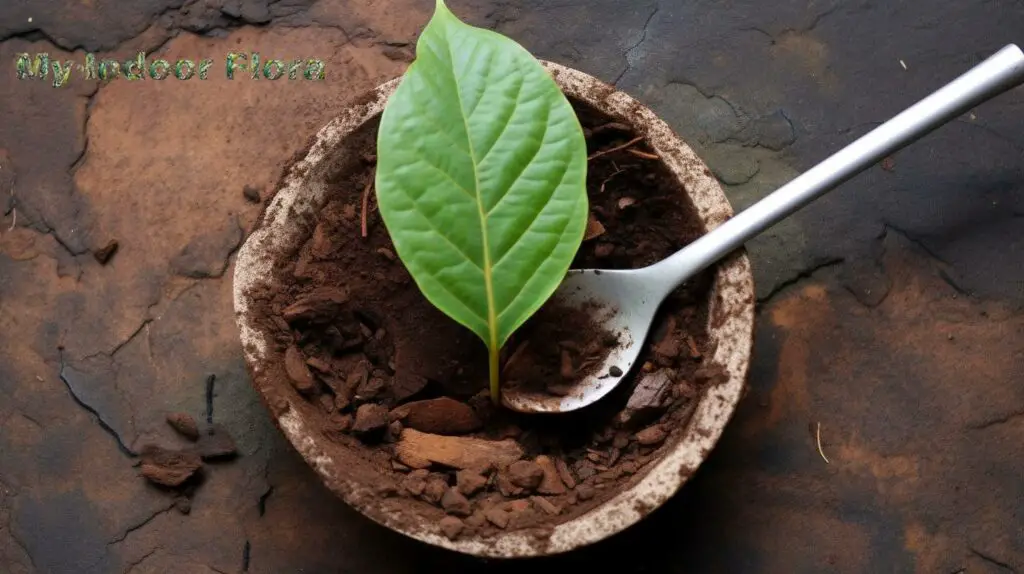Indoor plant propagation by leaf cuttings is a remarkable biological process, where a single leaf generates a new, independent plant. This vegetative propagation technique, inherent to the plant kingdom, capitalizes on the plant’s cellular potential to form an entirely new organism, a phenomenon documented in botany as totipotency.
Leaf cuttings exploit this innate plant ability, enabling gardeners to multiply many indoor plant species efficiently. This method is widely used for various popular houseplants such as African Violets, Peperomia, Begonia, and many types of succulents. According to a study published in the “Journal of Horticultural Science and Biotechnology,” leaf cuttings can result in a success rate of over 90% for some species under ideal conditions.
This article will guide you through every aspect of this fascinating method, from the science behind it to the practical steps needed to propagate your own plants successfully. It will also explore the broader implications of leaf cutting propagation, its environmental benefits, and role in plant conservation. In understanding and mastering this process, you can become a more skilled and sustainable indoor gardener.
What is Propagation by Leaf Cuttings?
Propagation by leaf cuttings is a fascinating, organic process by which a whole new plant is cultivated from just a fragment of a leaf. This botanical marvel is a testament to the regenerative capabilities that some plants possess within their cellular structure. Indeed, it involves manipulating the plant’s inherent ability to produce an entirely new plant from its parts, a process termed vegetative propagation. In this case, the “part” is a leaf or a piece of a leaf.
In simple terms, propagation by leaf cuttings involves detaching a leaf from a parent plant and providing the right conditions for it to form roots and eventually grow into a separate, independent plant. Each leaf cutting has the genetic blueprint of its parent, which means the newly grown plant is a clone of the original one. This concept is particularly interesting because it essentially means that you are duplicating the plant.
This method of propagation has been recognized and used in horticulture for centuries. It plays a significant role in the commercial production of certain plants, but it also offers home gardeners a fun and cost-effective way to increase their plant collection.

Importance and Advantages of Propagation by Leaf Cuttings
Propagation by leaf cuttings has several advantages. Firstly, it’s a great way to clone your favorite plants. If you have a particular plant that you love due to its vigor, color, resistance to disease, or any other trait, you can create an exact copy of it.
Moreover, propagation by leaf cuttings is a cost-effective way to expand your plant collection. Instead of buying new plants, you can generate more plants from the ones you already own. This is not only economical but also a sustainable and eco-friendly approach to gardening.
Another advantage of this method is its role in preserving plant varieties. Some plants might be challenging to grow from seeds, and others might not even produce seeds at all. By propagating these plants through leaf cuttings, we can ensure their survival and continued presence in our gardens and homes.
What Kinds of Indoor Plants are Suitable for Leaf Cuttings?
While several indoor plants can be propagated by leaf cuttings, some species are more responsive to this method. The success of leaf-cutting propagation is highly dependent on the species and even the specific variety of the plant.
Below is a table listing some common indoor plants ideal for leaf-cutting propagation:
| Common Name | Scientific Name |
|---|---|
| Snake Plant | Sansevieria trifasciata |
| Jade Plant | Crassula ovata |
| African Violet | Saintpaulia ionantha |
| Rubber Plant | Ficus elastica |
| Rex Begonia | Begonia rex-cultorum |
| Peperomia | Peperomia spp. |
Characteristics of Plants that Respond Well to Leaf Cuttings
The plants that respond well to propagation by leaf cuttings usually have certain characteristics. They tend to have fleshy, robust leaves that can retain moisture for extended periods. This is crucial because the cut leaf must survive long enough without roots to eventually form its own roots.
Additionally, these plants have active meristem cells within their leaves. Meristem cells are the building blocks of plant growth, capable of differentiating into various plant tissues. This cellular characteristic is a primary reason why some plants can regenerate from a leaf cutting while others cannot.

Materials and Equipment Needed for Leaf Cuttings
When propagating plants from leaf cuttings, having the right tools at hand can make the process more efficient and successful. These tools don’t have to be fancy or expensive but should be clean and suitable for the task.
Here is a list of the basic equipment you will need.
- Sharp cutting tool: This could be a knife, a pair of scissors, or pruning shears. Whatever you choose, it must be sharp enough to make clean cuts and should be sterilized to prevent the spread of disease.
- Containers: These will hold your leaf cuttings and the potting medium. They can be plastic pots, ceramic pots, or even recycled containers from your kitchen. Just make sure they have drainage holes.
- Potting medium: This is the substance that your leaf cuttings will grow in. It should be well-draining but also capable of retaining enough moisture to support the cuttings as they form roots.
- Rooting hormone: While not always necessary, a rooting hormone can sometimes improve the success rate of leaf-cutting propagation by encouraging quicker root formation.
Suitable Media for Planting Cuttings
The choice of potting medium can greatly influence the success of propagation. The medium needs to be well-draining to prevent waterlogging and subsequent rotting of the leaf cuttings. Yet, it should also be able to retain some moisture because the cuttings will initially rely on this moisture to survive.
A common choice is a mixture of peat or coir and perlite or sand. The peat or coir retains moisture and provides some nutrients, while the perlite or sand ensures good drainage. Some people also have success with water propagation, where the leaf cutting is placed in a container of water until roots form. However, plants propagated in water may have a harder time adapting when they are eventually transferred to a soil medium.
How to Prepare Leaf Cuttings for Propagation?
Preparing leaf cuttings is a crucial step in the propagation process. It’s not just about taking a leaf off a plant; there are specific techniques that can enhance the likelihood of successful propagation.
Pre-treatment of Cuttings
Before you start cutting, it’s important to ensure that the plant you’re taking cuttings from is healthy and free from pests or diseases. A visibly vigorous plant is a good sign that the plant is suitable for propagation.
Select a mature, healthy-looking leaf for the cutting. The age and size of the leaf may vary depending on the plant species, but generally, a fully-grown leaf is a good choice. Avoid leaves that are damaged, discolored, or show signs of disease or pest infestation.
To make the cut, use a sharp, sterile cutting tool and make a clean cut through the leaf’s base near the stem. For some plants, such as the Snake plant or African Violet, you can use a leaf section rather than the whole leaf. For these species, cut the leaf into sections, each containing a main vein.

Importance of Cleaning and Sterilizing the Cuttings
Cleaning and sterilizing the cuttings are essential steps that can prevent potential future problems. Microorganisms that might be harmful to the plant could be present on the leaf surface or within the cut. Cleaning the cuttings can help to reduce the risk of introducing these microorganisms to the new growing environment.
How to Plant and Care for Leaf Cuttings?
After you’ve taken and prepared your leaf cuttings, it’s time to plant them. The process involves providing a nurturing environment that supports the leaf cuttings as they develop roots and eventually, new growth.
Step-by-Step Guide on Planting the Cuttings
- Prepare your container: Fill your container with a suitable potting medium, ensuring it’s well-draining but can retain moisture.
- Insert the cutting: Make a hole in the potting medium and insert the base of the cutting or the cut end of the leaf section. For some plants, the cuttings may need to be laid flat on the surface of the medium.
- Water the cutting: Water the potting medium lightly until it’s moist but not saturated.
- Provide a warm environment: Initially, the cuttings will appreciate a warmer environment than mature plants. This can often be achieved by covering the container with a plastic bag or placing it in a propagator to create a mini greenhouse effect.
- Place in a suitable location: Position the container in a location that receives bright, indirect light. Avoid direct sunlight, which can scorch the cuttings.
Watering, Lighting, and Temperature Requirements for Cuttings
Just like mature plants, cuttings have specific needs when it comes to watering, lighting, and temperature. Watering should be consistent but moderate. Overwatering can lead to waterlogged soil and rotting of the cutting, while underwatering can dehydrate and stress the cutting.
Light is crucial for photosynthesis, but direct sunlight can be too intense for the young cuttings. Therefore, a spot with bright, indirect light is ideal.
As for temperature, warmth can stimulate root development, so aim to provide a temperature of around 18-24°C (64-75°F).
Common Problems and Solutions during Propagation by Leaf Cuttings
Even with careful preparation and care, problems can arise during propagation by leaf cuttings. Most issues are related to diseases and pests.
Identifying Common Diseases and Pests in Cuttings
A common disease that affects cuttings is a fungal infection known as damping-off. It causes the cuttings to rot at the base, eventually killing the cutting.
Pests can also be a problem. For example, fungus gnats are small flies that lay their eggs in damp soil, and their larvae can feed on the roots of plants.
Effective Solutions and Preventive Measures
To prevent damping-off, ensure your cutting tools and containers are clean and sterile. Avoid overwatering as this creates an ideal environment for fungal growth.
To control fungus gnats, allow the top layer of the soil to dry out between waterings as their larvae need constant moisture. If necessary, consider using a biological control like beneficial nematodes.
In general, providing optimal conditions for your cuttings and monitoring them closely will allow you to identify and address any issues early. This way, you can enjoy the rewarding experience of propagating your favorite plants from leaf cuttings.
How to Monitor the Growth and Development of Cuttings?
Monitoring the growth and development of your leaf cuttings is an integral part of the propagation process. It helps you to adjust care as necessary and allows you to witness the rewarding transformation from a simple leaf cutting to a thriving new plant.
Key Indicators of Healthy Root Development
The first sign of successful propagation is the appearance of new roots. Depending on the plant species and the environmental conditions, this can take anywhere from a few days to several weeks. Unfortunately, because roots form beneath the soil, they can be challenging to see. However, several other signs can indicate healthy root development:
- Stability of the Cutting: If the cutting resists a gentle tug, it’s likely that roots have formed and are anchoring the cutting in place.
- New Growth: The appearance of new leaves or shoots is a good sign that the cutting has formed roots and is now growing.
- Healthy Leaf Appearance: If the cutting remains green and turgid, it is a good indication that the propagation is on track. Wilting or yellowing leaves can be a sign of problems.

Transplanting Cuttings: When and How?
Once your cuttings have developed a healthy root system and started to grow, it’s time to transplant them into a larger pot. Waiting until the roots are well established will make the transition easier for the plant.
To transplant, carefully remove the cutting from its current container, trying to disturb the roots as little as possible. Then, place it in a new pot filled with a suitable potting mix and water it thoroughly.
Advanced Techniques for Propagation by Leaf Cuttings
While the basic technique for propagation by leaf cuttings is relatively straightforward, there are some more advanced techniques that you can experiment with to potentially increase your success rate.
Variations of the Leaf Cutting Method
Some plants, particularly those with large leaves like begonias and sansevierias, can be propagated from leaf sections. This method involves cutting a leaf into sections, each containing a main vein, and then planting these sections.
For succulents like echeverias, a technique called “leaf pullings” is used. This involves gently twisting a leaf from the stem, ensuring to get the whole leaf including the base, and then laying it on the surface of a well-draining potting mix.
Tips and Tricks for Boosting Success Rates in Propagation
- Keep the environment humid: This can be achieved by covering the cuttings with a plastic bag or placing them in a propagator.
- Avoid direct sunlight: Too much direct sunlight can cause cuttings to dry out and die.
- Use a rooting hormone: This can help to speed up root formation.
How Sustainable is Leaf Cuttings?
Indoor plant propagation by leaf cuttings is a highly sustainable practice. It minimizes waste, reduces the need for purchasing new plants, and can even play a role in plant conservation.
Leaf cuttings has minimal environmental impact. It uses parts of plants that might otherwise be discarded, making it an excellent example of waste reduction. Moreover, it decreases the demand for commercially grown plants, which often involve the use of chemical fertilizers and pesticides.
The primary benefit is the reduction of carbon footprint. Growing plants absorb carbon dioxide, thus helping to combat climate change. By propagating your plants, you are effectively increasing the number of plants that can contribute to this process.
Leaf cutting propagation can also play a vital role in plant conservation. Some plant species are slow to reproduce or do not produce viable seeds. For such species, vegetative propagation techniques provide an alternative means of reproduction, helping to preserve the species and maintain biodiversity.
Conclusion
Indoor plant propagation by leaf cuttings is a fascinating and rewarding practice. Whether you’re a beginner or an experienced gardener, the process offers an opportunity to understand plant growth better and multiply your favorite plants. It’s not only an environmentally friendly way to expand your indoor garden but also plays a part in conserving plant species. So next time you’re pruning your indoor plants, don’t discard those leaves – they could be the start of a whole new plant.
